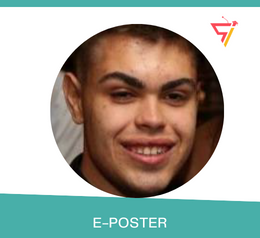Scholars 4th Edition International Conference on
Catalysis and Chemical Engineering
THEME: "Exploring Critical Breakthroughs in Catalysis and Chemical Engineering"
 27-28 Mar 2023
27-28 Mar 2023  Crowne Plaza Ealing, London, UK & Online
Crowne Plaza Ealing, London, UK & Online THEME: "Exploring Critical Breakthroughs in Catalysis and Chemical Engineering"
 27-28 Mar 2023
27-28 Mar 2023  Crowne Plaza Ealing, London, UK & Online
Crowne Plaza Ealing, London, UK & Online 
Pontifícia Universidade Católica de Minas Gerais, Belo Horizonte, Brazil
FCAW X CWG PROCESS
Mechanical/mechatronics engineering student at the Pontificia Universidade Católica de Minas Gerais, I am completely passionate about my course and I love to learn. I consider myself a disciplined and organized person, I have been working at Alicerce Educação since I was 19 years old as a professional in the field of education, I also worked in the automation sector autonomously, and recently I worked at KSB Brazil as a maintenance intern for centrifugal pumps. I have a great interest mainly in electronics knowledge; I dream of specializing in the future in the field of mechanical prostheses and try to make a difference in people's lives using engineering knowledge
This presentation explores the technical characteristics of welding processes and analyzes the structure of the welded joint (base metal, heat-affected zone, and weld metal) in terms of structure, mechanical properties, and penetration profile, using samples welded by the flux-cored arc welding (FCAW) and cold wire gas (CWG) processes. The evaluation of the system (welded joint) is based on the best weldability from tensile tests, analysis of the bead penetration profile, deposition rate, and heat added to the process. Welded joint performance comparisons are made using ABNT 1020 carbon steel with E-71T1 and E-70S6 wires, respectively. The specimens were welded in a flat position and chamfered, using different gas mixtures in both the FCAW and CWG processes. As a result, no discontinuity was observed in the welded joints, and the values of the mechanical properties tested did not indicate material embrittlement. Therefore, the values presented in the penetration profile and deposition rate were higher for the CWG process. The heat input in the welded joint was also lower for the CWG process, demonstrating a better performance for the process.
Co-authors: Caio César Melo de Sousa Miranda, Gustavo de Pádua Megale, Deborah Santos, Pedro Américo de Almeida Magalhâes Júnior, Leonel Dimas de Abreu.
Keywords
CWG; FCAW; structural analysis; welded structure; MIG/MAG; Welding